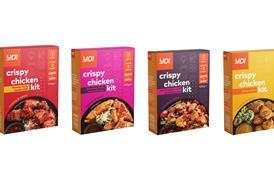Independents are undertrading in relation to their scale while symbols overtrade, a clear indication of the advantages of membership. Although symbol groups may charge a fee and demand certain disciplines, they offer a cost-effective route to securing better ranges, organised promotional programmes, delivery, better services, and store upgrades, according to IGD.
The IGD defines a convenience store as one of less than 3,000 sq ft, selling predominantly food and drink, and stocking at least eight core convenience items, such as bread and milk.
There are about 54,000 convenience stores in the UK and the acquisition by Tesco of T&S Stores and the Co-operative Group’s Alldays buy has changed the market dynamics. In addition, overall store numbers are down by 1.7%, driven by a decline in the number of independents (-2.6%), says IGD.
The total convenience market grew by 4.1% to £21.5bn last year, which is twice the rate of the overall market. This amounts to 20p in every £1 spent on food in the UK. A strong performance by symbol groups contributed to this rise.
Last year the grocery market as a whole grew by 2% in value, which was a reflection of the fierce price competition and market saturation in the sector.
Tesco’s acquisition of T&S Stores has made the company the UK’s biggest convenience retailer, with 5% of all sales and 1.8% of stores. Had it not acquired T&S Stores it would have had 1% of sales and 0.2% of all stores.
In recent years the ranges offered by convenience stores have been changing. Chilled food in particular has proved to be popular and profitable. The high margins on chilled food, fast food and sandwiches make them very tempting.
However, these categories also carry risk for the retailer because short shelf lives and costly chiller space require retailers to balance availability and wastage carefully.
Store size is also key to the sector. Forecourts have the smallest premises of all convenience retailers - on average the size of a squash court. However their sales densities are high because they focus on top-selling lines. New entrants have ushered in new standards - BP/Safeway offers fresh produce in a forecourt environment, for example. In-store services are increasingly important - cashback drives footfall and encourages extra purchases.
In the future, range planning and meeting consumers’ expectations of rising store standards will be crucial for all convenience operators.
Cost-effective route
The IGD defines a convenience store as one of less than 3,000 sq ft, selling predominantly food and drink, and stocking at least eight core convenience items, such as bread and milk.
There are about 54,000 convenience stores in the UK and the acquisition by Tesco of T&S Stores and the Co-operative Group’s Alldays buy has changed the market dynamics. In addition, overall store numbers are down by 1.7%, driven by a decline in the number of independents (-2.6%), says IGD.
The total convenience market grew by 4.1% to £21.5bn last year, which is twice the rate of the overall market. This amounts to 20p in every £1 spent on food in the UK. A strong performance by symbol groups contributed to this rise.
Last year the grocery market as a whole grew by 2% in value, which was a reflection of the fierce price competition and market saturation in the sector.
Tesco’s acquisition of T&S Stores has made the company the UK’s biggest convenience retailer, with 5% of all sales and 1.8% of stores. Had it not acquired T&S Stores it would have had 1% of sales and 0.2% of all stores.
In recent years the ranges offered by convenience stores have been changing. Chilled food in particular has proved to be popular and profitable. The high margins on chilled food, fast food and sandwiches make them very tempting.
However, these categories also carry risk for the retailer because short shelf lives and costly chiller space require retailers to balance availability and wastage carefully.
Store size is also key to the sector. Forecourts have the smallest premises of all convenience retailers - on average the size of a squash court. However their sales densities are high because they focus on top-selling lines. New entrants have ushered in new standards - BP/Safeway offers fresh produce in a forecourt environment, for example. In-store services are increasingly important - cashback drives footfall and encourages extra purchases.
In the future, range planning and meeting consumers’ expectations of rising store standards will be crucial for all convenience operators.
Cost-effective route














No comments yet